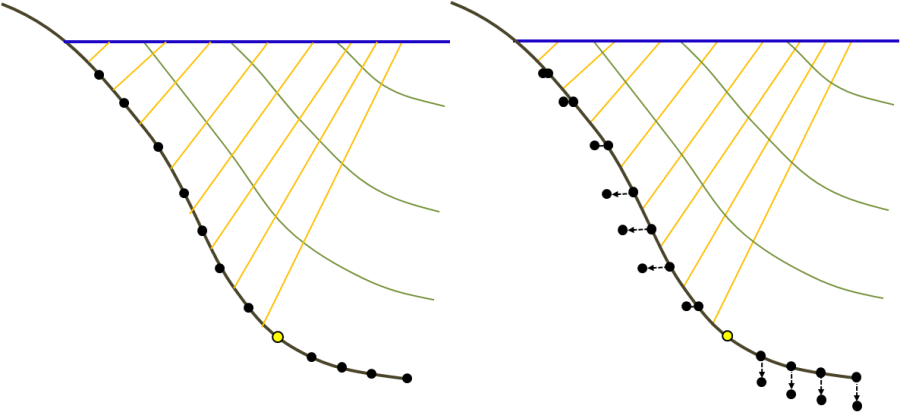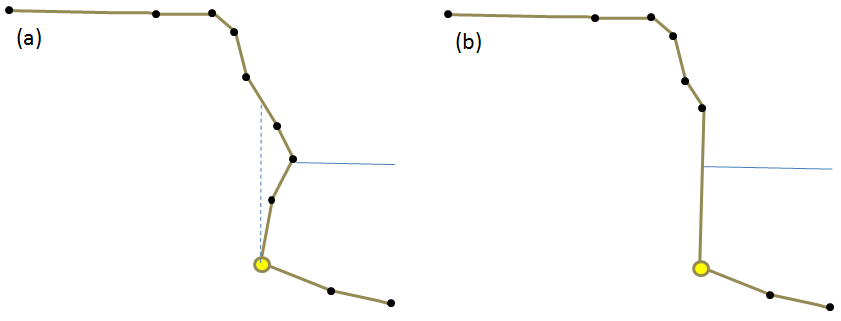If the clay content of the layer is greater than twenty percent, the software uses an excess shear cohesive equation, scoring material based on the erodibility and shear. For clay content less than twenty percent, scour is computed using a transport function. Different nodes (below) can invoke different transport equations depending on the associated layer material. Then the nodes in the toe scour region of the model are adjusted laterally.

This radial shear distribution commonly computes maximum shear stress at the toe. Therefore, the toe will often scour more than the other nodes, yielding an overhanging bank like the one in graph a below. HEC-RAS requires increasing station values, so it cannot retain or represent overhanging banks in the current version. Therefore, HEC-RAS assumes that overhanging banks fail vertically, as depicted in the figure below. Because overhanging banks eventually fail, this should not introduce substantial error in long term models.
